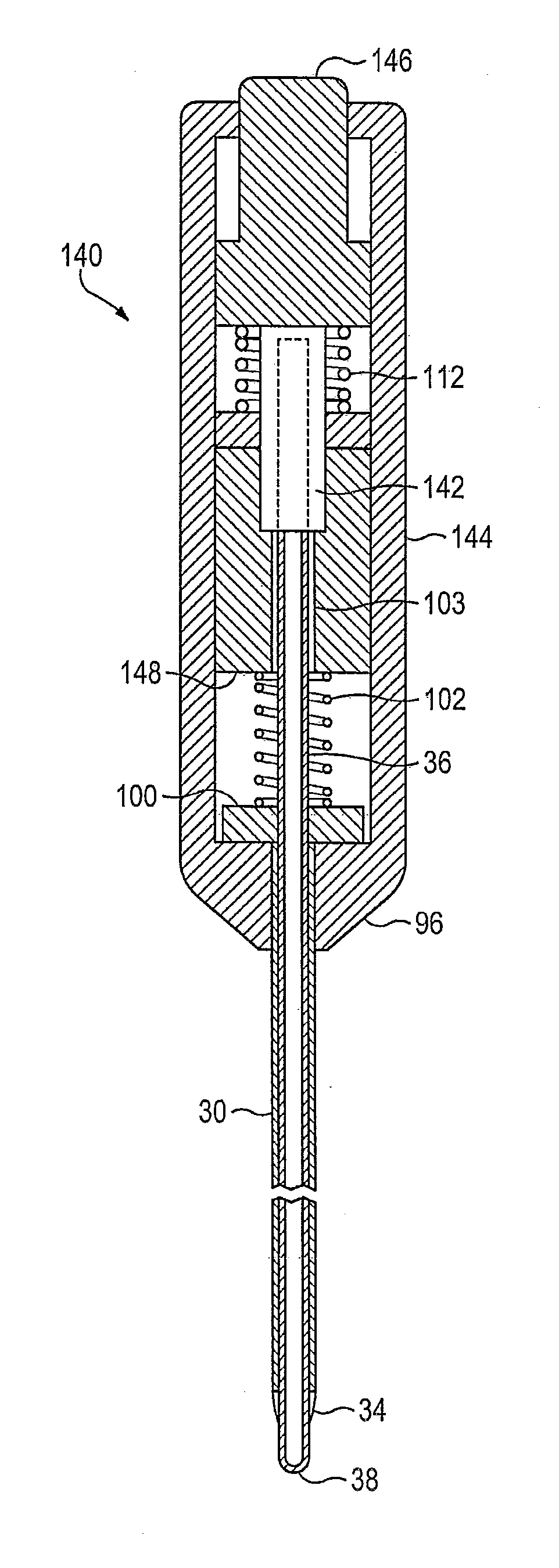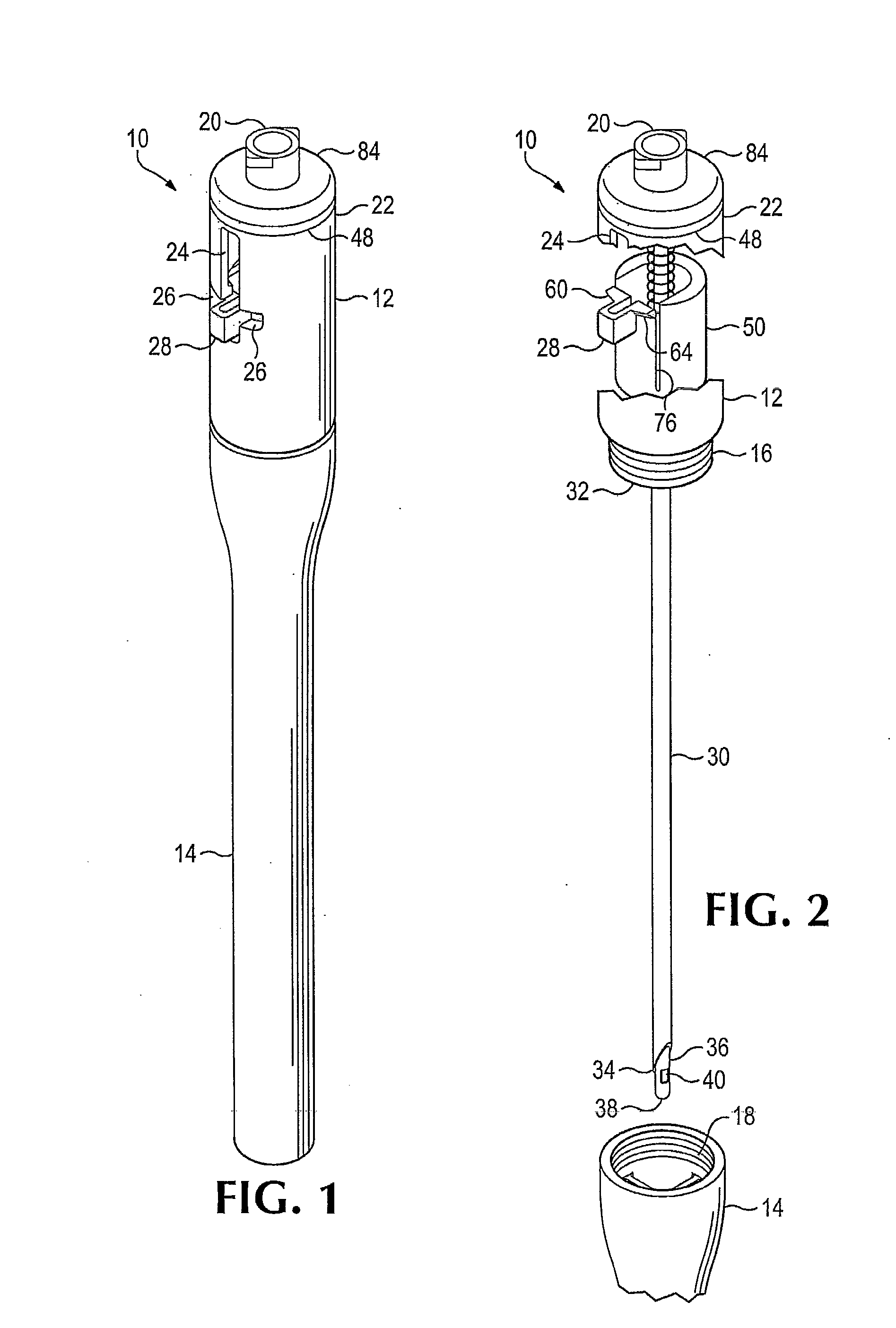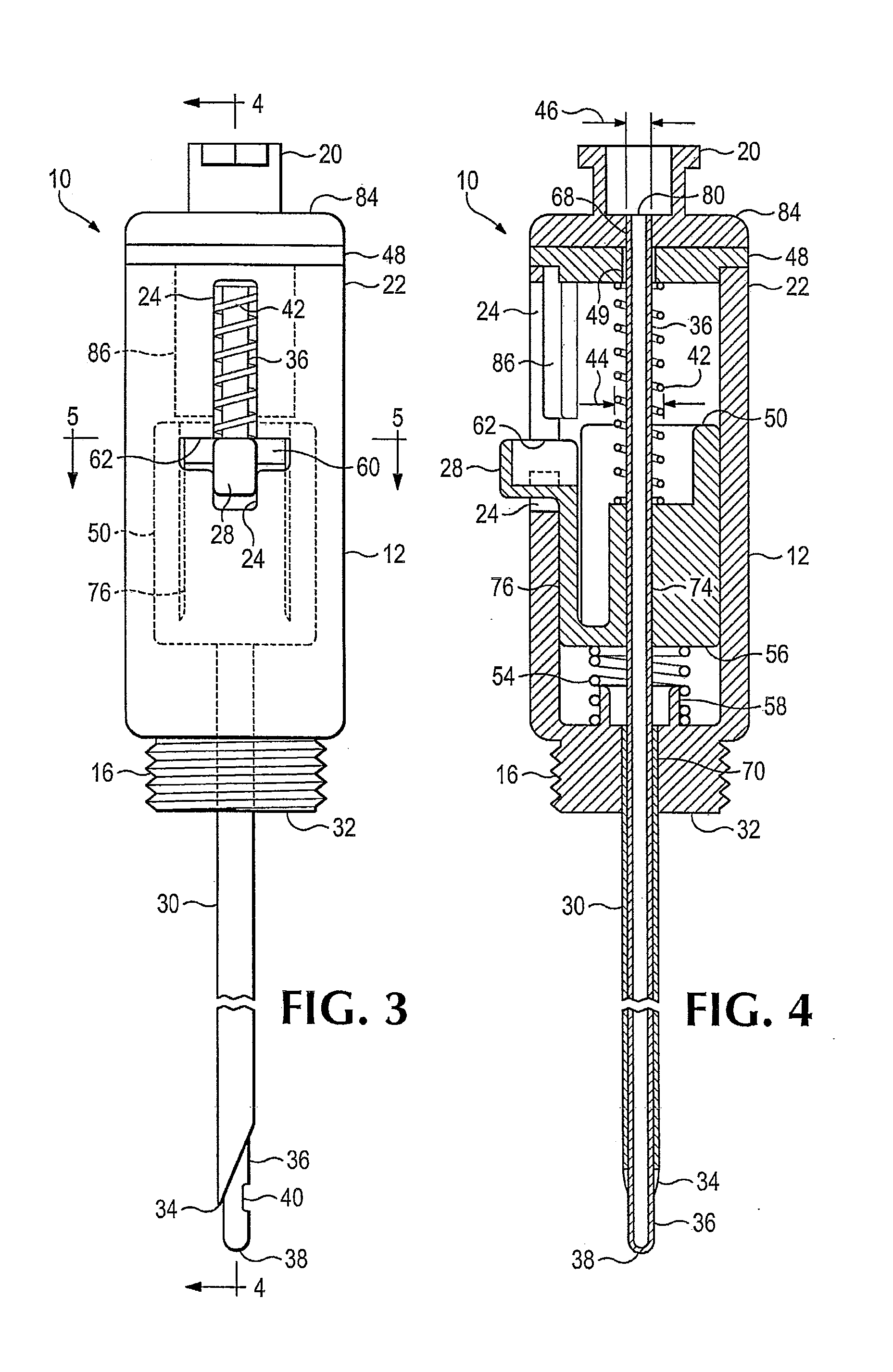Safety needle
a safety needle and needle technology, applied in the field of medical conditions, can solve the problems of affecting the health of patients, affecting the function of the patient, and the catheter is likely to kink and close, so as to relieve the tension of the pneumothorax and increase the fluid flow
- Summary
- Abstract
- Description
- Claims
- Application Information
AI Technical Summary
Benefits of technology
Problems solved by technology
Method used
Image
Examples
Embodiment Construction
[0031]Referring to the drawings which form a part of the disclosure herein, and referring first to FIGS. 1 and 2, a medical device 10 includes a housing or body 12 to which a generally cylindrical protective outer cover 14 is shown connected in FIG. 1. The cover 14 may be detachably connected to the body 12 as by an externally threaded portion 16 of the body 12 and mating internal threads 18 in the cover 14. Both the body 12 and the cover 14 may be of suitable molded plastic. The device 10 may be packaged in a hard protective case for sterilization and protection in an austere prehospital environment.
[0032]A connector, such as a female Luer fitting 20, may be provided at the proximal end 22 of the body 12, the top end as shown in FIGS. 1 and 2. The body 12 may be generally cylindrical, and defines a slot 24 extending longitudinally along one side near the proximal end 22. The slot 24 pierces the cylindrical wall of the body 12, extending into the interior of the body 12, as will be ...
PUM
 Login to View More
Login to View More Abstract
Description
Claims
Application Information
 Login to View More
Login to View More - R&D
- Intellectual Property
- Life Sciences
- Materials
- Tech Scout
- Unparalleled Data Quality
- Higher Quality Content
- 60% Fewer Hallucinations
Browse by: Latest US Patents, China's latest patents, Technical Efficacy Thesaurus, Application Domain, Technology Topic, Popular Technical Reports.
© 2025 PatSnap. All rights reserved.Legal|Privacy policy|Modern Slavery Act Transparency Statement|Sitemap|About US| Contact US: help@patsnap.com



